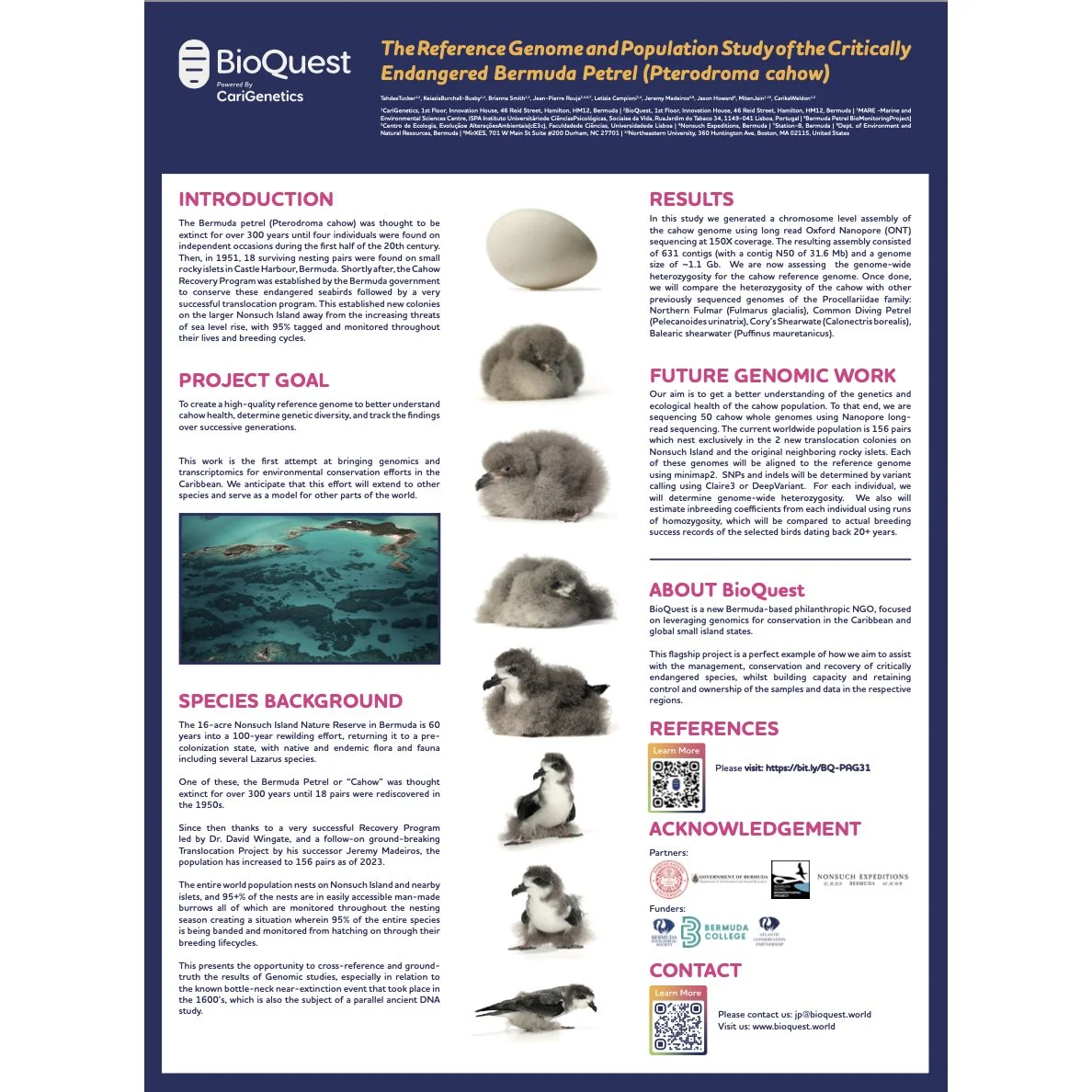PAG31 Poster # PE 0572
The Bermuda petrel (Pterodroma cahow) was thought to be extinct for over 300 years until four individuals were found on independent occasions during the first half of the 20th century. Then, in 1951, 18 surviving nesting pairs were found on small rocky islets in Castle Harbour, Bermuda. Shortly after, the Cahow Recovery Program was established by the Bermuda government to conserve these endangered seabirds followed by a very successful translocation program. This established new colonies on the larger Nonsuch Island away from the increasing threats of sea level rise, with 95% tagged and monitored throughout their lives and breeding cycles.
In this study we generated a chromosome level assembly of the cahow genome using long read Oxford Nanopore (ONT) sequencing at 150X coverage. The resulting assembly consisted of 631 contigs (with a contig N50 of 31.6 Mb) and a genome size of ~1.1 Gb. We are now assessing the genome-wide heterozygosity for the cahow reference genome. Once done, we will compare the heterozygosity of the cahow with other previously sequenced genomes of the Procellariidae family: Northern Fulmar (Fulmarus glacialis), Common Diving Petrel (Pelecanoides urinatrix), Cory’s Shearwate (Calonectris borealis), Balearic shearwater (Puffinus mauretanicus).
Our aim is to get a better understanding of the genetics and ecological health of the cahow population. To that end, we are sequencing 50 cahow whole genomes using Nanopore long- read sequencing. The current worldwide population is 156 pairs which nest exclusively in the 2 new translocation colonies on Nonsuch Island and the original neighboring rocky islets. Each of these genomes will be aligned to the reference genome using minimap2. SNPs and indels will be determined by variant calling using Claire3 or DeepVariant. For each individual, we will determine genome-wide heterozygosity. We also will estimate inbreeding coefficients from each individual using runs of homozygosity, which will be compared to actual breeding success records of the selected birds dating back 20+ years.
This work is the first attempt at bringing genomics and transcriptomics for environmental conservation efforts in the Caribbean. We anticipate that this effort will extend to other species and serve as a model for other parts of the world.

